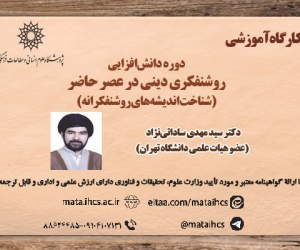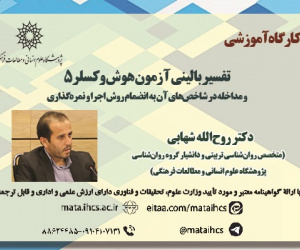ارزیابی و پهنه بندی آسیب پذیری اراضی شهری در معرض خطر سیل (نمونه موردی: مناطق 1، 5 و10 کلان شهر تبریز) (مقاله علمی وزارت علوم)
درجه علمی: نشریه علمی (وزارت علوم)
آرشیو
چکیده
سیل، یکی از بحرانی ترین و مخر ب ترین تهدیدات برای جوامع بشری، شهرهای در حال توسعه و ساکنین آن ها می باشد و در صورت عدم آمادگی قبلی و برنامه ریزی صحیح ممکن است خسارات جانی و مالی جبران ناپذیری را بر سکونتگاه ها، استحکام ابنیه و تاسیسات شهری وارد سازد. کلان شهر تبریز نیز به علت موقعیت جغرافیایی ویژه و سوابق وقوع سیل های مخرب، از این تهدید مستثنی نیست. عبور و تلاقی دو رودخانه «میدان چایی» و «مهران چایی» و ارتفاعات «عون ابن علی» در مناطق 5،1 و10 شهر تبریز، خطر آسیب پذیری اراضی این مناطق را افزایش داده و این محدوده را به یکی از مهمترین نقاط سیل خیز کلان شهر تبریز تبدیل می نماید. پژوهش حاضر از نوع کاربردی و روش تحقیق، توصیفی-تحلیلی می باشد. هدف این تحقیق پهنه بندی و بررسی آسیب پذیری نقاط مختلف اراضی شهری در برابر سیل و عوامل تأثیرگذار بر این مخاطره در مناطق 5،1 و 10 کلان شهر تبریز است. معیارها و زیرمعیارهای تأثیرگذار بر وقوع سیل، توسط کارشناسان و متخصصین خبره انتخاب و سپس برای پهنه بندی آسیب پذیری اراضی این مناطق و محاسبه نقش هر کدام از معیارها و زیرمعیارهای مذکور از مدل تصمیم گیری چندمعیاره «1MCDM» و فرآیند تحلیل سلسله مراتبی«2AHP» بهره گرفته و با استفاده از قابلیت های تحلیل مکانی نرم افزار «Arc 3GIS» لایه های نهایی پهنه بندی خطر سیل و عوامل مؤثر بر سیل خیزی تهیه گردید. با تلفیق این لایه ها، نقشه نهایی پهنه بندی خطر سیل و شناسایی نقاط امن و آسیب پذیر محدوده مورد مطالعه مشخص گردید. نتایج تحقیق نشان می دهد 1 درصد از اراضی مناطق مذکور، در پهنه بندی خطر آسیب پذیری خیلی زیاد، 17 درصد خطر زیاد، 30 درصد خطر متوسط، 40 درصد در پهنه کم خطر و 3 درصد در پهنه خطر خیلی کم از لحاظ سیل گیری قرار دارند.Assessment and Zoning of Urban Lands Vulnerability Exposed to Flood Risk (Case Study: Regions 1, 5, and 10 of the Metropolis of Tabriz)
Flooding is one of the most critical and destructive threats to human societies, developing cities, and their residents, which, if not prepared in advance and properly planned, may cause irreparable loss of life and property to settlements, the strength of buildings, and urban facilities. Tabriz metropolis is not exempt from this threat due to its special geographical location and history of destructive floods. The crossing and confluence of the two rivers, Meydan Chayi and Mehran Chayi, and the heights of Aun Ebn Ali in areas 5, 1, and 10 of Tabriz city increase the risk of land vulnerability in these areas, making this area one of the most important flood-prone areas of Tabriz metropolis. The present study is of an applied type and the research method is descriptive-analytical. The aim of this research is to zone and investigate the vulnerability of different parts of urban lands to flooding and the factors affecting this risk in regions 5, 1 and 10 of Tabriz metropolis. The criteria and sub-criteria affecting the occurrence of floods were selected by experts and specialists, and then the MCDM multi-criteria decision-making model and the AHP analytic hierarchy process were used to zone the vulnerability of the lands of these areas and calculate the role of each of the aforementioned criteria and sub-criteria. Using the spatial analysis capabilities of Arc GIS software, the final layers of flood risk zoning and factors affecting flooding were prepared. By combining these layers, the final flood risk zoning map and identification of safe and vulnerable areas of the study area were determined. The research results show that 1 percent of the lands in the mentioned areas are in the very high risk zone, 17 percent are in the high risk zone, 30 percent are in the medium risk zone, 40 percent are in the low risk zone, and 3 percent are in the very low risk zone in terms of flooding.







